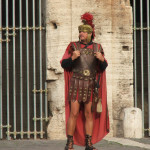Sermon by Randall T. Clayton, Brown Memorial Woodbrook Presby. Church, Baltimore MD. February 5, 2017.
Text: Luke 7:1-17
 This is one of those days when I wish we had a screen and a way to project onto it here in the sanctuary, because if we did I’d show you a video produced in Denmark that’s been making it’s way around social media that begins with the camera panning around a big room which has big white squares, boxes, painted on the floor (“What Happens When You Stop Putting People in Boxes”, created by TV2 Denmark).
This is one of those days when I wish we had a screen and a way to project onto it here in the sanctuary, because if we did I’d show you a video produced in Denmark that’s been making it’s way around social media that begins with the camera panning around a big room which has big white squares, boxes, painted on the floor (“What Happens When You Stop Putting People in Boxes”, created by TV2 Denmark).
An unseen voice says, “It’s easy to put people in boxes, there’s us and there’s them. The high earners and those just getting by”. As the announcer says these words a group of people dressed in business attire walks into the room and they all go and stand inside one of those white boxes outlined on the floor. They are then followed by another group of people wearing jeans, tee shirts, and the uniforms of fast food workers who all go and stand in another one of the white squares.
The announcer continues: It’s easy to put people in boxes…“Those we trust and those we try to avoid. There’s the new days and those who’ve always been here.” As the announcer says each of these phrases, a group of similarly dressed and similar looking people enter and go to stand in their respective white boxes on the floor.
“It’s easy to put people in boxes,” the announcer said. “The people from the countryside and those who’ve never seen a cow. “The religious and the self-confident. There are those we share something with and those we don’t share anything with.” One after another all of the white boxes on the floor are filled, with the people in each box resembling somehow the others in that particular box.
The camera then points toward a single character, a person who appears to be a leader, who says to the group of people all standing in their boxes, “Welcome, I am going to ask you some questions today, some of them might be a bit personal but I hope you will answer honestly. Who in this room was the class clown?”
Smiles form on people’s faces and slowly some of the people from the “never seen a cow” box move to the center of the room, along with a couple from the “from the countryside box.” Then a person or two from the “just getting by box’ step toward the center of the room and we see people from virtually all of the boxes meet those in the middle of the room too…all of them, class clowns,
“Who are stepparents?” the leader asks. Once again, people step out of the various boxes they had been standing in, and meet in the middle of the room. And they begin to hug each other and shake hands and talk together.
At this point in the video, the original unseen announcer’s voice returns saying, “And then suddenly there’s us. We who believe in life after death; we who’ve seen UFOs; and all of us who love to dance. We who’ve been bullied and we who’ve bullied others. And then there’s us…we who are brokenhearted; we who are madly in love; we who feel lonely.”
As he says each of these phrases individuals move out of their original boxes and meet-up in the middle of the room acknowledging a commonality that had been obscured by the box they were in originally.
The announcer says, “And then there’s us…we who are broken-hearted; we who are madly in love; we who feel lonely; we who are bisexual…” At this point a single man steps out of his box. He just stands in the middle, all by himself. No one else leaves a box. But in just a second as he stands there looking a little uncomfortable, all alone, the room erupts in applause. And he smiles as the announcer says, “We who are bisexual and we who acknowledge the courage of others; we who have found the meaning of life and we who have saved lives. And then there’s all of us who just love Denmark. So maybe there’s more that brings us together than we think
And as I think about Jesus’ life, and in particular the two stories that we read a moment ago from Luke’s Gospel, it seems to me that Jesus would have liked that video and it’s message about boxes.
In Jesus’ day Jesus’ community put the Romans in a box labeled “bad guys”. They were the oppressors, who ruled with a terrible and brutal force. And so, when a Centurion, the commander of a force of 100 Roman soldiers sends people to Jesus asking for Jesus to heal his slave, it would have been shocking to many in Jesus’ community that Jesus would deign to respond to him because clearly he must be a “bad guy” since he was a Roman centurion. And that Jesus’ response included a trip toward the Centurion’s home was more shocking still because that would have caused Jesus to end up in the “unclean” box.
oppressors, who ruled with a terrible and brutal force. And so, when a Centurion, the commander of a force of 100 Roman soldiers sends people to Jesus asking for Jesus to heal his slave, it would have been shocking to many in Jesus’ community that Jesus would deign to respond to him because clearly he must be a “bad guy” since he was a Roman centurion. And that Jesus’ response included a trip toward the Centurion’s home was more shocking still because that would have caused Jesus to end up in the “unclean” box.
Now it is surely true that many of those who served Rome’s interests were probably brutal and wielded a savage sword, it would appear that this Centurion wasn’t among those. Even though many in Jesus’ community probably put him in the “bad guy” box with the rest of the Romans, this individual doesn’t seem to have been a bad guy. In fact, he had curried friendships among some of the Jews in his town, even going so far as to fund a synagogue for them. And so, when there was a need in his household, some of the Jewish elders came to Jesus for Jesus’ help. As Jesus was on the way to the Centurion’s home, Jesus was met by some of the Centurion’s friends bringing a message from the Centurion that Jesus need not come to his house, that all Jesus needed to do was say the word and the slave would be healed. And as it turned out, Jesus said a word, and the slave was healed, and then Jesus praised the faith of this man many relegated to the “bad guy” box because of his job and his religion. Maybe he wasn’t such a bad guy after all. Maybe even those we relegate to the “bad guy” boxes aren’t so bad either.
 Soon after that Jesus was in a town called Nain, about 25 miles or so from Capernaum where he had healed the Centurion’s slave. As he was entering the town he happened upon a funeral procession. On the bier being carried to a burial place outside the town was the corpse of a man who was probably between 20 and 40 years of age. And in the procession was the dead man’s mother who happened to be a widow who also had no other living sons. As a widow, any wealth that she and her husband had amassed would have gone to her only son when her husband had died. Now that her son was dead, whatever resources he had at his death, would not have flowed back to his mother since women didn’t inherit. So his death did not just plunge her into grief, but into abject poverty as well.
Soon after that Jesus was in a town called Nain, about 25 miles or so from Capernaum where he had healed the Centurion’s slave. As he was entering the town he happened upon a funeral procession. On the bier being carried to a burial place outside the town was the corpse of a man who was probably between 20 and 40 years of age. And in the procession was the dead man’s mother who happened to be a widow who also had no other living sons. As a widow, any wealth that she and her husband had amassed would have gone to her only son when her husband had died. Now that her son was dead, whatever resources he had at his death, would not have flowed back to his mother since women didn’t inherit. So his death did not just plunge her into grief, but into abject poverty as well.
It was a cruel system, that somehow reinforced the culture’s assumptions that women were not of value, and allowed the world to ignore the plight of widows, putting them all into a box with a big label on the outside that said, “Not Worth Much.”
But Jesus looked beyond the labels on the box, and into the box itself. And when he did, he truly saw this widow as a person, a person of value. And when he saw her, he cared about her vulnerability and in his compassion he reached out to her without her even asking him to do anything, inviting her to stop weeping as he said to the dead son, “Arise.” And with that command not only was the son resuscitated but her needs were met as well. With her son alive again she had a means of support…food, housing, clothing were all possible once again. Not worth much? Not in Jesus’ eyes.
The world lumped widows all together, in a box labeled “not worth much“, but Jesus didn’t. Jesus’ own community lumped all the keepers of the Roman law together in a box called “bad guys”, but Jesus didn’t. Jesus own community separated themselves from those who believed differently then they, putting the gentiles into a box with a label that said “Unclean,” but his actions demonstrated that Jesus didn’t. Over and over in Jesus’ life and ministry he tore the labels off the boxes we create, and in fact, invited people out of the boxes we put them in.
I think that we put people into boxes…Christians in one box, Jews in another; Palestinians in one box here , and Israeli’s in a box over there; Republicans and Democrats; Christians and Muslims; Americans and the rest of the world; black and white; gay and straight; the good and the bad. And more than likely all of the people in the “good guy” box look suspiciously like us.
We put people into boxes I think because we think it makes us feel safe to know where everyone is and where they seem to belong. But when it’s all said-and-done, it’s probably only an illusion of security rather than real safety. And perhaps we put people into boxes because it’s just more comfortable when we know where everyone’s place is. With everyone in a box, we are enabled to stroll along a path that doesn’t feel threatening and which doesn’t demand too much of us. Take people out of the boxes, and there’s a possibility that we might find ourselves embarking on a new journey along a different path, which might lead to a new and different future. But the thing of it is, along that new journey there is surely God’s work to do, Christ’s love to share, and where we might have the privilege of compassionately meeting the world’s need in God’s name.
Jesus didn’t put people into boxes; in fact, he tore the labels off of them, and invited people out of them, and he calls us to do the same. After all, there is more that binds us together than separates us in God’s kingdom; and surely there is more that could bring us together than we might think. [walk to display of cardboard boxes in front of communion table] And besides, aren’t these boxes kind of ugly?
